Let’s start simple, shall we?
Why do I need a glass for my beer?
I can hear him already, my Grandpa, telling me that his beer already came in a perfectly good drinking vessel (the bottle or can)from the store. Why does he need to pour it in a glass, dirtying up a bunch of dishes when there’s no need? The answer is all about tasting. I suppose if you are drinking something you aren’t worried about, or don’t really want to taste all the flavors of, not using a glass makes a lot of sense. But as craft beer drinkers, that’s not us…right?RIGHT!?
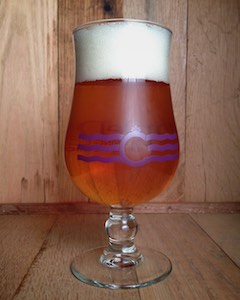
Tasting beer is actually a process that starts with your eyes. The way your beer looks is important to how you are about to perceive it. To prove this to yourself, look at any review of a beer. What the beer looks like when it was poured is almost certainly addressed at the very start of the review. Beer is beautiful, we should enjoy that by pouring it into a vessel that allows us to see it in all its glory. From the color of the liquid to the bubbles rising from the bottom of the glass into a big fluffy head perched on top of our glass, it’s all an essential part of the drinking experience. A beautiful presentation of your beer shouldn’t be overlooked when you talk about the importance of beer glasses.
So, how do I choose which glass to use?
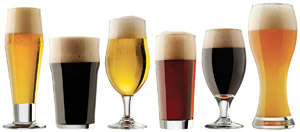
The why of glassware is easy, we put our beer in a glass because we want to taste it “better“, but how do we choose what glass to drink out of? There is an endless variety of glasses on the market. You will often hear for instance that in Belgium brewers will make a different glass for every beer to be served in, and even here in the United States more are being made every day. So, how can we decide which one really works best for the beer that we are drinking?
Let’s start with what not to use.
Don’t use a shaker pint glass. You know…that glass that you see in every bar you go into. It’s thick… it’s probably got a logo of some brewery on it and has tall straight sides and a big open top. Don’t use it, you’re just as well off drinking your beer out of a Home Depot bucket. They are designed to be cheap, versatile, and stackable. They are not designed to make your beer taste better. To really understand why they don’t help our beer, we need to look at all the factors that do make our beer better once poured.
It’s all about the Quartz.
The second law of thermodynamics states that entropy increases to the point of equilibrium. This means that heat will flow from hot to cold until the two are at the same temperature (unless an outside force is at play). The point of all this is that a thicker glass has the ability to hold more heat, and therefore will have more heat to transfer into your beer, and will do so at a faster rate than a thinner glass. This is something you really need to try for yourself… pour your beer into a thick glass and a thin one, let it go for 5 minutes or so, then see how the temperature has changed, I promise you will start buying thinner…but better glasses.
Let’s also mention that the solubility of carbon dioxide decreases as temperature increases…so as your beer warms, it will also get flatter as you drink… so you will have a warm, flat beer before no time. Not exactly appetizing for a beer.
The nicer glassware that you purchase, the nicer the glass… The more pure the quartz that is used to craft your beer glass, the more durable, the better thermodynamics you’ll find, and the prettier your beer glass will look with your beer poured into it. Don’t cheap out… Get a good glass.
What shape of glass should I get?
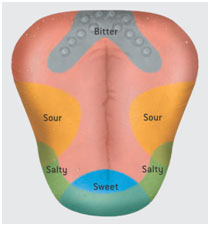
The most important part of selecting a glass for your beer might be first analyzing what flavors you are hoping to support in the beer. We are all pretty familiar with the map of the tongue and where flavors are best tasted on it (bitterness on the back, sweetness on the front, sour on the sides, etc.). Although this isn’t entirely accurate, there’s a little truth to certain parts of your tongue being more sensitive to certain flavors. There is some merit to knowing if some of these are prominent in your beer, and selecting a glass that directs the beer to that part of the palate. There is a bit of trial and error here, though. Unless a glass specifically tells you that that’s what is going to happen, it’s hard to discern where the beer is being directed onto your palate. Something to keep in mind, though.
In my opinion, it’s always a great option to keep lots of different glassware on hand. Experimentation will help you find your preferences as you drink. You might find your favorite go-to glass for everything you drink, you might also find that you’re trying something new every time you crack open a beer. That’s the fun of it!
The new class of glass.
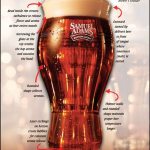
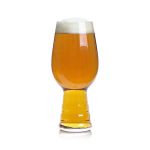
The last few years have shown some advances in glassware that have brought out this debate to a lot of mainstream circles. This started with Sam Adams developing their “Perfect Pint”, then moved on to the renowned glassmaker Spiegelau teaming up with breweries in developing their IPA glass, Stout glass, and most recently their Wheat glass. These glasses along with the old standby Spiegelau tulip glass are the crème of the crop and are more than enough for even the nerdiest of beer geek to have a solid collection, in my opinion.
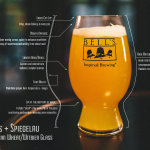
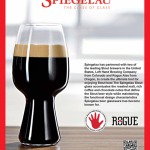
So… all this being said, how do you select your glassware? It takes some nerdiness…it takes a little experimentation, and in the end, a lot of it is probably up to personal preference. There will always be times when you will find me drinking a cold lager out of a bottle or a can because the situation requires it. There will also be times when my beer will be in a pint glass. Beer shouldn’t always take itself seriously.
